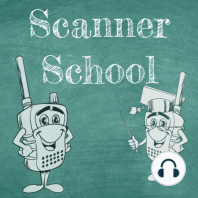25 min listen

151 - How to Combine Antennas
FromScanner School - Everything you wanted to know about the Scanner Radio Hobby
151 - How to Combine Antennas
FromScanner School - Everything you wanted to know about the Scanner Radio Hobby
ratings:
Length:
30 minutes
Released:
Nov 10, 2020
Format:
Podcast episode
Description
Have you wanted to learn about how to combine multiple antennas? In this episode, Phil discusses some best practices for using multiple antennas, including how to set them up to avoid interference, how to bring the signal into your house to connect to your radios, and more. What You Need To Know LMR 400 Coax costs around $1 per foot, so running multiple coax lines for many antennas can get very expensive. Diplexers have a low port, high port, and a common port. Triplexers have a low port, mid port, high port, and a common port. You should not use a T connector to combine multiple antennas. It’s possible to run multiple antennas into the same coax line and then split them again at the bottom to feed them into specific radios. Diplexers have a wide separation between Frequency A and Frequency B, and are fairly inexpensive compared to duplexers. Duplexers are tunable and used for frequencies that are very, very close together, like same band combiners. Duplexers are larger and are typically ground-mounted, but diplexers/triplexers/quadplexers can be mounted indoors or outdoors. All session notes with links to the items we talked about an be found on our website at www.scannerschool.com/session151 If you need help with your scanner and are looking for some one on one tutoring, I'd love to help you out. Visit www.scannerschool.com/consulting to book your one hour appointment today! You can help support Scanner School by visiting our support page at www.scannerschool.com/support Don't forget to join us for our weekly net on Zello. For info, visit https://www.scannerschool.com/zello
Released:
Nov 10, 2020
Format:
Podcast episode
Titles in the series (100)
019 - Weather Alert Radios and Weather Alert Monitoring: Severe Weather Monitoring goes beyond just scanning. I believe that every home and business should have a weather alert radio in a location that is centralized. A weather alert radio can be a life saving device and should be... by Scanner School - Everything you wanted to know about the Scanner Radio Hobby